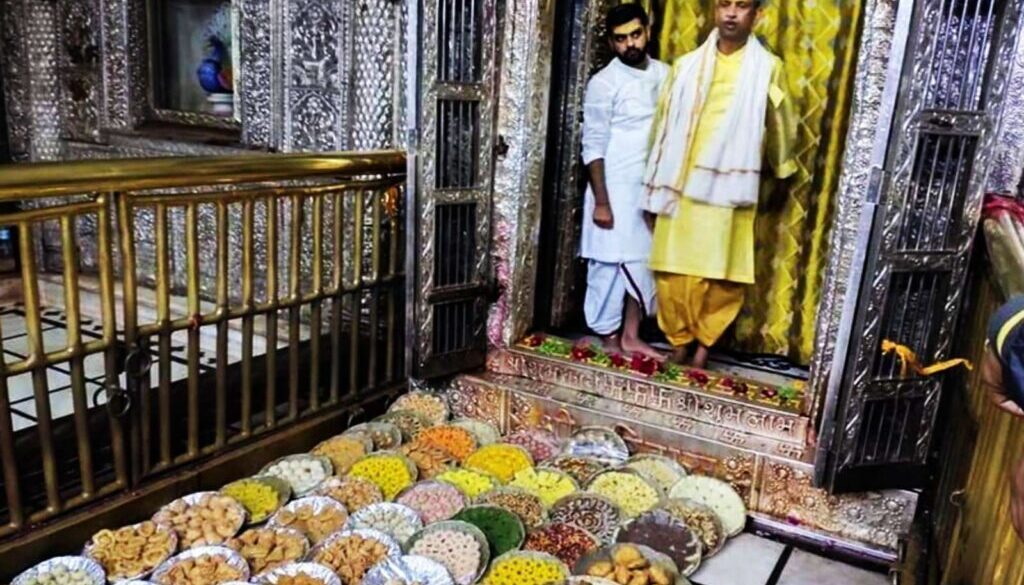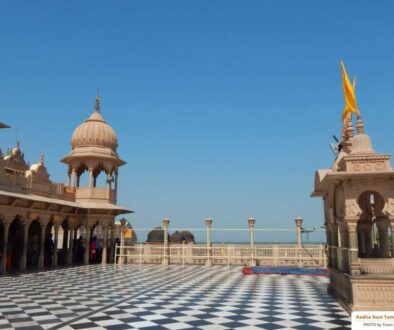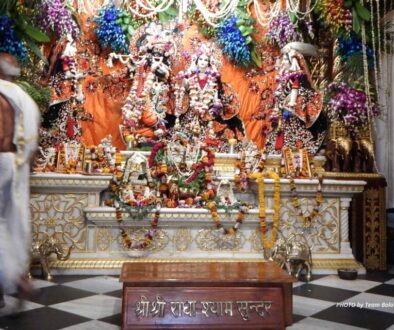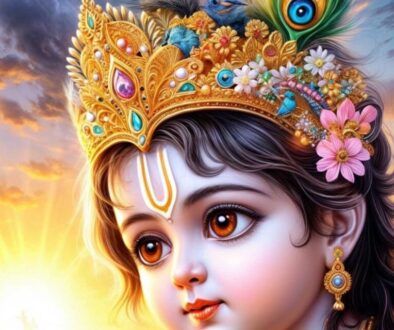56 Bhog: The Divine Feast Offered to Lord Krishna on Janmashtami
Krishna Janmashtami, the birth anniversary of Lord Krishna, is celebrated with immense devotion and grandeur across India. One of the most significant rituals during this festival is the offering of 56 Bhog, a grand feast comprising 56 different types of food items. But why is Lord Krishna offered 56 foods on this auspicious day? Let’s delve into the fascinating story behind the 56 Bhog and understand its spiritual significance.
The Origin of 56 Bhog: A Divine Tale
The tradition of offering 56 Bhog to Lord Krishna originates from a beautiful and devotional story that reflects the deep love and reverence of the devotees towards the deity. According to the legend, during His childhood, Lord Krishna lifted the Govardhan Hill to protect the villagers of Vrindavan from the wrath of Lord Indra, who had unleashed a torrential downpour on the village.
For seven days and seven nights, Lord Krishna held the hill on His little finger, providing shelter to the villagers and their cattle. During this time, the residents of Vrindavan could not offer their daily meals to Krishna. It is believed that Krishna used to consume 8 meals a day, but for those 7 days, He didn’t eat anything. After the rains stopped, the villagers, overwhelmed with gratitude, decided to prepare a grand feast to compensate for the 56 meals that Krishna had missed. Thus, they offered 56 Bhog to Lord Krishna, marking the beginning of this age-old tradition.
Significance of 56 Bhog in Janmashtami Celebrations
The offering of 56 Bhog is not just a ritual but a deep expression of love, devotion, and gratitude towards Lord Krishna. Each food item in the Bhog represents a symbolic offering of the devotee’s heart, filled with reverence and pure intentions. The feast is also an acknowledgment of Krishna’s divine protection and blessings.
The Number 56: Spiritual Interpretation
The number 56 holds special significance in Hinduism, symbolizing completeness and wholeness. It is believed that Lord Krishna is omnipotent and omniscient, and offering 56 different varieties of food is an attempt to please Him by satisfying all His tastes and desires. The 56 Bhog represents the collective offerings of the villagers of Vrindavan and is symbolic of the diverse and abundant blessings that Krishna bestows upon His devotees.
What Does 56 Bhog Consist Of?
The 56 Bhog is a grand assortment of foods, including sweets, savories, fruits, dairy products, and grains. The items are carefully selected to cater to the diverse tastes and preferences of Lord Krishna, who is known for His fondness for food, especially butter and sweets. Some of the common items included in the 56 Bhog are:
-
Makhan (Butter): A favorite of Lord Krishna, symbolizing His playful and mischievous nature.
-
Ladoo: Sweet and round, representing the sweetness and joy of devotion.
-
Kheer: A creamy rice pudding made with milk, sugar, and dry fruits.
-
Puri: Fried bread, often served with various curries and sabzis.
-
Halwa: A sweet dish made from semolina, sugar, and ghee.
-
Peda: A soft and delicious sweet made from khoya (reduced milk).
-
Chhena: Fresh cottage cheese, often used to make various sweets.
-
Fruits: Seasonal fruits like bananas, apples, and pomegranates.
-
Chhappan Bhog Ka Prasad: The final offering that is distributed as prasad among the devotees.
Each of these items is prepared with utmost devotion and care, and the entire offering is made with the belief that Lord Krishna will accept the food and bless the devotees.
The Ritual of Offering 56 Bhog
The ritual of offering 56 Bhog is performed with great devotion, following strict religious protocols. The preparation of the Bhog begins days in advance, with devotees meticulously planning the menu and gathering the ingredients. On the day of Janmashtami, the Bhog is offered to the deity at midnight, the time of Lord Krishna’s birth.
Step-by-Step Process:
-
Purity and Cleanliness: The kitchen where the 56 Bhog is prepared is thoroughly cleaned, and only pure ingredients are used. Devotees often observe a fast or maintain a satvik (pure) diet while preparing the Bhog.
-
Decoration of the Deity: The idol of Lord Krishna is bathed, adorned with new clothes, and decorated with flowers and ornaments. The altar is beautifully decorated, creating a divine ambiance.
-
Offering of Bhog: The 56 Bhog is placed before the deity in an organized manner. Each item is carefully arranged, symbolizing the devotion and love of the devotees. Mantras and hymns are chanted as the offering is made.
-
Aarti and Prasad Distribution: After the Bhog is offered, an aarti (ritual of worship) is performed. The Bhog is then distributed as prasad (holy food) to the devotees, symbolizing the blessings of Lord Krishna.
Celebrating Janmashtami with 56 Bhog: A Festival of Devotion and Joy
Janmashtami is not just a celebration of the birth of Lord Krishna but a festival that brings people together in devotion, joy, and communal harmony. The tradition of offering 56 Bhog is a central part of these celebrations, reflecting the deep bond between the devotees and the deity.
Community Involvement:
In many parts of India, especially in temples dedicated to Lord Krishna, the preparation of 56 Bhog is a community event. Devotees come together to contribute ingredients, cook the food, and participate in the rituals. This collective effort strengthens the sense of community and shared devotion.
Cultural Significance:
The offering of 56 Bhog is also a cultural tradition that has been passed down through generations. It is a way of preserving the rich heritage of Hindu rituals and festivals, ensuring that the younger generation stays connected to their roots.
Modern Interpretations and Variations of 56 Bhog
In contemporary times, the tradition of offering 56 Bhog has seen various interpretations and adaptations. While the core essence remains the same, some devotees customize the Bhog to include regional specialties or dishes that are significant to their family traditions.
Regional Variations:
-
North India: In regions like Uttar Pradesh and Rajasthan, the 56 Bhog often includes local delicacies like Ghewar, Mathri, and Baati.
-
South India: In states like Tamil Nadu and Karnataka, the Bhog may include items like Pongal, Vada, and Payasam.
-
West Bengal: The Bhog may feature sweets like Rasgulla, Sandesh, and Mishti Doi.
Health-Conscious Offerings:
With the growing emphasis on health and wellness, some devotees prefer to offer healthier alternatives, such as low-sugar sweets, gluten-free dishes, or organic ingredients. However, the spiritual intent remains unchanged, with the focus on devotion and purity.
Conclusion: The Timeless Tradition of 56 Bhog
The offering of 56 Bhog to Lord Krishna on Janmashtami is a timeless tradition that embodies the essence of devotion, gratitude, and cultural heritage. It is a beautiful expression of the love and reverence that devotees have for Krishna, who is not just a deity but a beloved companion in their spiritual journey.
As you celebrate Janmashtami this year, may the tradition of 56 Bhog inspire you to connect with the divine, cherish the blessings of Lord Krishna, and share the joy of devotion with your community. Whether you follow the traditional rituals or create your own unique offering, the spirit of 56 Bhog remains a powerful reminder of the boundless love that flows between the devotee and the divine.




